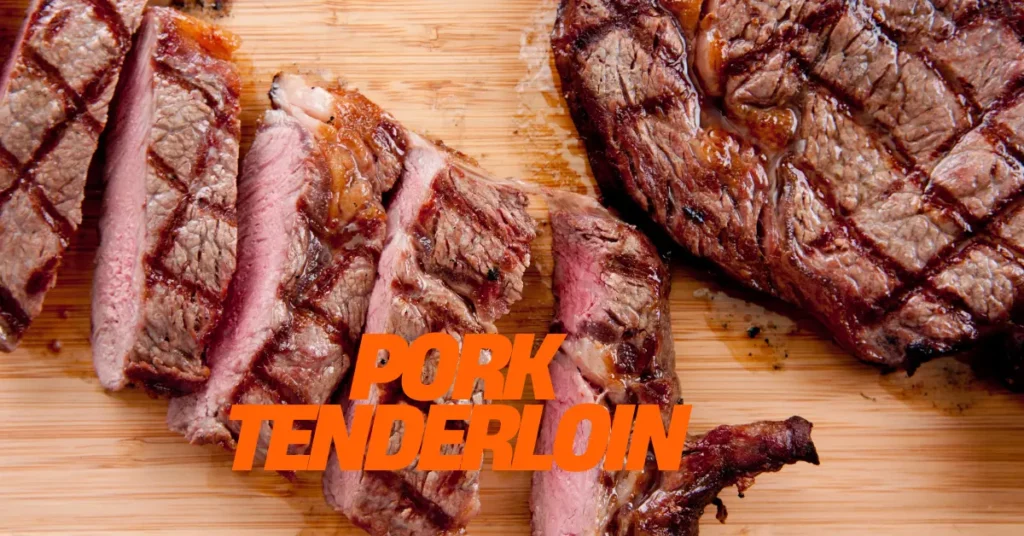This post may contain affiliate links. If you use these links to buy something we may earn a small commission. Thanks.
Pork tenderloin is a popular cut of meat known for its tenderness and versatility. Whether you’re meal prepping, taking advantage of bulk purchases, or simply dealing with unexpected changes in meal plans, you might wonder: Is it safe to thaw and refreeze pork tenderloin?
The short answer is yes, but with conditions. Proper handling is crucial to maintaining food safety and ensuring the meat’s quality remains intact. In this guide, we’ll break down the risks, USDA recommendations, thawing methods, and best practices to refreeze pork tenderloin safely without compromising flavor and texture.
Food Safety Considerations
When dealing with raw meat, food safety should always be a top priority. The USDA states that it is safe to refreeze raw meat that has been thawed in the refrigerator, as long as it has not been left at room temperature for extended periods.
Why Is Refreezing a Concern?
Each freeze-thaw cycle impacts the meat in two ways:
- Bacterial Growth Risk – When meat is thawed, bacteria that were dormant in the freezer become active again. If the meat remains in the “danger zone” (40°F – 140°F) for too long, bacteria multiply rapidly, making the meat unsafe to consume.
- Quality Degradation – Ice crystals form inside the meat when frozen, damaging the muscle fibers. Each time meat is thawed and refrozen, more moisture is lost, leading to a dry and less flavorful pork tenderloin.
To avoid these risks, how you thaw the meat is just as important as how you refreeze it.

Proper Thawing Methods
Thawing pork tenderloin correctly plays a vital role in food safety. Below are three common methods, ranked from safest to riskiest when considering refreezing.
1. Refrigerator Thawing (Best Method)
- Place the frozen pork tenderloin in the refrigerator (set at or below 40°F).
- Allow 12 to 24 hours for a full thaw, depending on size.
- Once thawed, the pork can remain in the refrigerator for 1 to 2 days before cooking or refreezing.
Why is this the best method?
- It keeps the meat at a safe temperature throughout the thawing process.
- Since it never enters the danger zone, it is safe to refreeze without significant bacterial growth concerns.
2. Cold Water Thawing (Acceptable but Time-Sensitive)
- Place the pork tenderloin in a leak-proof plastic bag.
- Submerge in cold water (not warm or hot).
- Change the water every 30 minutes to keep it cold.
- Thawing takes approximately 1 to 3 hours, depending on thickness.
- Must be cooked immediately after thawing and should not be refrozen in its raw state.
Why is refreezing risky after cold water thawing?
Since the meat is exposed to fluctuating temperatures, bacteria may start growing. Refreezing raw pork after this method is not recommended unless it is cooked first.
3. Microwave Thawing (Not Recommended for Refreezing)
- Use the defrost setting on your microwave, following its guidelines for meat.
- Monitor closely to prevent partial cooking.
- Must be cooked immediately after thawing.
Why shouldn’t you refreeze after microwaving?
Microwaves can unevenly heat the pork, partially cooking it in some areas. This can allow bacteria to grow if refrozen and later thawed again.
When Is It Safe to Refreeze Pork Tenderloin?
If you thawed the pork tenderloin in the refrigerator and it has not been at room temperature for more than 2 hours, you can safely refreeze it. Here’s a quick checklist:
✅ Thawed in the refrigerator (not on the counter or in warm water).
✅ Kept below 40°F the entire time after thawing.
✅ No unusual odor, slimy texture, or discoloration.
✅ Refreezing quickly (not leaving it in the fridge for too long before refreezing).
If all the above conditions are met, the pork is safe to refreeze without significantly increasing the risk of foodborne illness.
When Should You Avoid Refreezing Pork Tenderloin?
🚫 Thawed at room temperature or exposed to warm temperatures for over 2 hours.
🚫 Thawed using hot water or microwaved.
🚫 Has an off-smell, slimy texture, or discoloration.
🚫 Was originally frozen past its expiration date.
If any of these conditions apply, it’s best to cook the pork tenderloin immediately instead of refreezing.
How to Properly Refreeze Pork Tenderloin
To ensure the best quality when refreezing, follow these best practices:
1. Use Proper Packaging
- Vacuum-seal or wrap the pork tightly in plastic wrap and place it in a freezer bag to prevent freezer burn.
- Remove as much air as possible before sealing.
2. Portion the Meat
- Divide into smaller portions before refreezing to avoid thawing the entire tenderloin again when needed.
3. Label Clearly
- Write the refreezing date on the package so you can track how long it has been frozen.
4. Freeze Quickly
- Place in the coldest part of the freezer (-10°F or lower).
- Use the fast freeze setting if available.
Impact on Texture and Flavor
While refreezing pork tenderloin is safe under the right conditions, each freeze-thaw cycle reduces the meat’s quality. Expect:
❌ Loss of moisture → The pork may become dry and tough when cooked.
❌ Weaker texture → Ice crystals break down muscle fibers, leading to a mushier texture.
❌ Diminished flavor → Pork may lose some of its natural juiciness and taste.
How to Minimize Quality Loss
- Marinate the meat before cooking to help retain moisture.
- Slow-cook or braise instead of grilling for a more tender result.
- Use high-moisture cooking methods, such as steaming or simmering.
Alternative Uses Instead of Refreezing
Instead of refreezing raw pork tenderloin, consider these alternatives:
1. Cook and Freeze
- Cook the pork first and then freeze it in portioned servings.
- Cooked pork retains quality better than raw pork that has been refrozen.
2. Use Immediately
- If you have thawed more than you need, incorporate it into stir-fries, soups, casseroles, or tacos.
Conclusion
Yes, you can thaw and refreeze pork tenderloin safely—but only if it was thawed in the refrigerator and handled correctly. However, refreezing may lead to texture and moisture loss. To maintain quality, follow proper thawing methods, use airtight packaging, and freeze quickly.
If refreezing isn’t an option, consider cooking the pork and freezing the cooked portions instead. With proper handling, you can enjoy delicious, safe pork tenderloin while minimizing waste.
